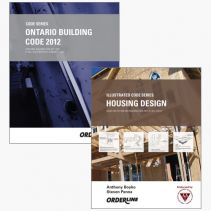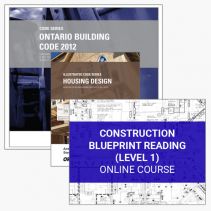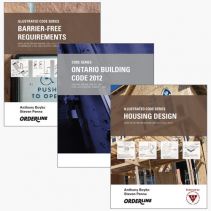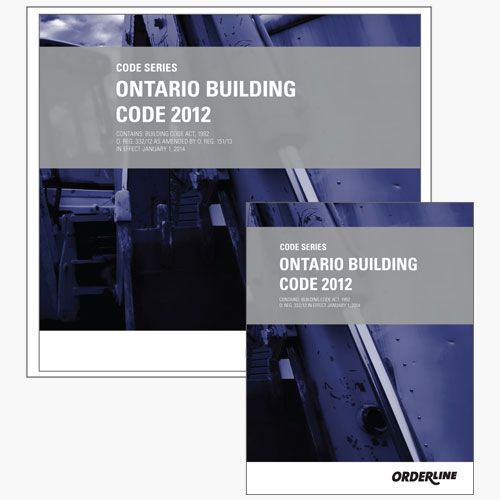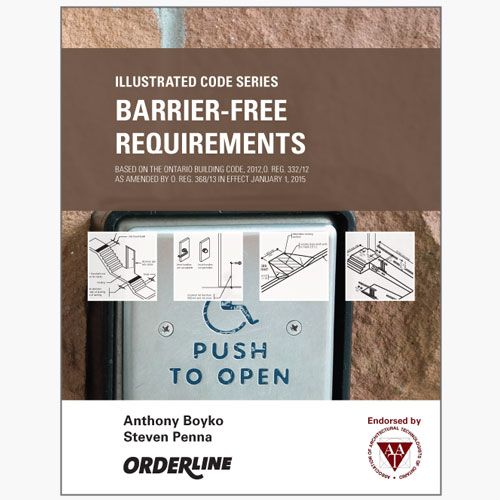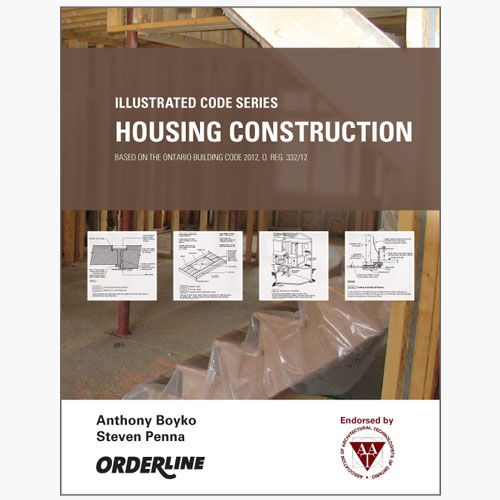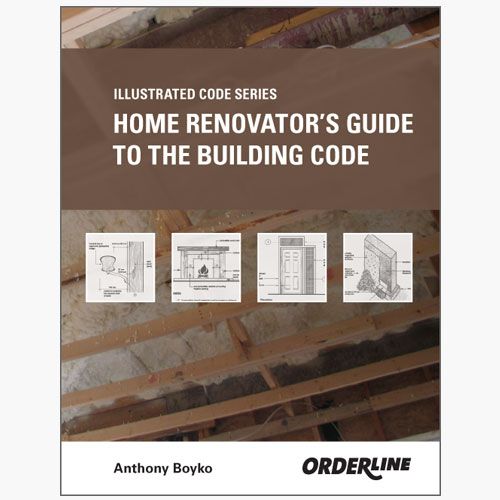
ILLUSTRATED CODE SERIES
Over 300 detailed diagrams
Based on the Ontario Building Code 2012, O. Reg. 332/12
Housing Design
More About This Product
The relevant requirements for creating building designs are explained article-by-article to help you get your designs approved by your local municipality. The information focuses on the minimum requirements of Ontario Regulation 332/12 for housing design.

Over 300 detailed illustrations and explanations to all pertinent articles from Part 9 including spatial separation, snow loading, and basement lighting!
Design a dwelling in compliance with the technical and administrative requirements of the Ontario Building Code 2012 with the Housing Design book from the Illustrated Code Series! Written by two professionals with over 45 years of combined experience in building code regulations and enforcement , this Guide is intended to assist designers, builders, inspectors, site superintendents, technology students and other industry stakeholders in understanding the requirements of the Ontario Building Code 2012 for the design of a house. It can also be used as a reference document to help prepare the reader for the Ministry of Municipal Affairs and Housing’s House 2012 qualification examination. The information focuses on the minimum requirements of Ontario Regulation 332/12 for housing design.
9.1. Application
9.3. Materials, Systems and Equipment
9.4. Structural Requirements
9.5. Design of Areas and Spaces
9.6. Glass
9.7. Windows, Doors and Skylights
9.8. Stairs, Ramps, Handrails and Guards
9.9. Means of Egress
9.10. Fire Protection
9.11. Sound Control
9.12. Excavation
9.13. Damproofing, Waterproofing and Soil Gas Control
9.14. Drainage
9.15. Footings and Foundations
9.16. Floors-on-Ground
9.17. Columns
9.18. Crawl Spaces
9.19. Roof Spaces
9.20. Masonry and Insulating Concrete Form Walls not in Contact with Ground
9.21 Masonry and Concrete Chimneys and Flues
9.22 Fireplaces
9.23. Wood-Frame Construction
9.25. Heat Transfer, Air Leakage and Condensation Control
Part 12 Resource Conservation and Environmental Integrity
9.26. Roofing
9.27. Cladding
9.29. Interior Wall and Ceiling Finishes
9.30. Flooring
9.31. Plumbing Facilities
9.32. Ventilation
9.33. Heating and Air-Conditioning
9.34. Electrical
9.39. Reinforced Concrete Slabs
Table A: Table A-1 to Table A-37
APPENDICES
Appendix A Permit Application and Schedule 1
Appendix B Qualification Requirements
Appendix C Housing Checklist
Appendix D Guide to the Energy Efficiency Design Summary Form (Part 9 Residential)
- Over 300 detailed illustrations
- 534 page 7" x 9" perfect-bound softcover or durable 12" binder, downloadable PDF
- Explanations to pertinent articles from Part 9 of the Ontario Building Code 2012 including spatial separation, snow loading, and basement lighting
Anthony Boyko is a Manager of Building Code Inspections and Deputy Chief Building Official with the City of Markham. He has held positions of building inspector, architectural plans examiner and project manager with a combined Building Code regulatory experience of over 25 years. Anthony has actively contributed to technical manuals produced by various governmental bodies and was a member of the executive committee for the Canadian Commission on Construction Materials Evaluation. He is an Architectural Technologist, Certified Engineering Technician, Certified Municipal Manager, CDECA Educator member and part-time college instructor. Anthony is provincially qualified as a supervisor/manager and designer.
Steven Penna is the Manager of Inspections for the City of Brampton’s Building Division with over 23 years of experience in the administration and enforcement of the Ontario Building Code. He is also a part-time instructor at Georgian College and for the Ontario Building Officials Association. Steven is a member of the Ontario Association of Certified Engineering Technicians and Technologists, and a Certified Building Codes Official with the Ontario Building Officials Association.


